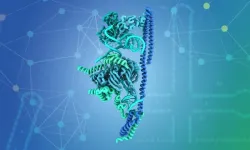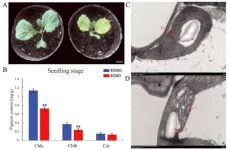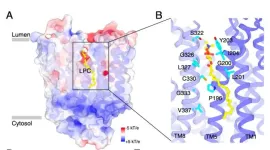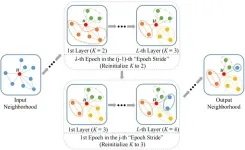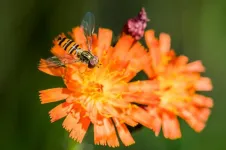(Press-News.org) New study reveals that coral reefs in the Gulf of Eilat experienced a surprising 3,000-year "shutdown" in growth, from about 4,400 to 1,000 years ago, likely due to a temporary drop in sea level that could have been caused by global cooling. This phenomenon, which aligns with similar reef interruptions in Mexico, Brazil, and Australia, suggests a widespread environmental shift during that period. Despite the long pause, the reef eventually recovered, with coral species reappearing from deeper waters, demonstrating their natural resilience. However, researchers warn that today's climate change, pollution, and ocean acidification pose far greater challenges, making conservation efforts more critical than ever to protect these vital marine ecosystems.
A new study led by Prof. Adi Torfstein from the Hebrew University and Prof. Oren Levy from Bar-Ilan University, in collaboration with an international team of researchers, has uncovered a significant pause in coral reef growth in the Gulf of Eilat/Aqaba, northern Red Sea, during the late Holocene period. The findings, published in Global Change Biology, provide crucial insights into the historical resilience of coral reef ecosystems and their response to environmental shifts.
Coral reefs are vital for marine biodiversity, playing a critical role in the oceanic carbon cycle and serving as natural barriers against coastal erosion and storm surges. However, their long-term sensitivity to temperature fluctuations, sea-level shifts, and anthropogenic influences remains poorly understood.
Key Findings:
A noticeable hiatus in reef growth between 4,400 and 1,000 years Before Present (BP) was observed, coinciding with similar events recorded in Mexico, Brazil, and Australia.
Coral diversity and abundance displayed remarkable consistency before and after the hiatus, suggesting that the reef ecosystem recovered by recolonizing from deeper coral communities.
The study attributes this temporary "shutdown" to a combination of tectonic activity and glacio-eustatic sea-level changes. A temporary sea-level drop, possibly caused by a cooling event, exposed the reef and halted its growth.
Additional analyses of coral skeletons in the modern era revealed a significant shift in the carbon isotopic composition, reflecting the increasing influence of human activity on the global carbon balance.
Innovative Research Methods:
The research team included Dr. Bar Feldman from Bar-Ilan University, Prof. Aldo Shemesh from the Weizmann Institute, Dr. Yonathan Shaked from the Inter-University Institute of Marine Sciences (IUI), Prof. Mick O’Leary from the University of Western Australia and Prof. Huang Dunwei from the National University of Singapore, conducted extensive sampling of coral cores up to three meters long. These samples provided an unprecedented window into the growth history of the reef over the past 10,000 years.
Implications for Future Coral Conservation:
Despite the historical "switch-off," the findings highlight the resilience of coral reef ecosystems in the face of environmental challenges. However, they also underscore the pressing need for conservation efforts to address the modern threats posed by climate change, ocean acidification, and human-induced disturbances.
"Understanding how reefs have responded to past sea-level changes helps us predict their future resilience and informs conservation strategies," said Dr. Torfstein. "While our research shows that coral communities can recover after major disruptions, today’s climate crisis presents unprecedented challenges that demand urgent action."
Supported by the Israel Nature and Parks Authority, this study enhances our understanding of coral reef dynamics and contributes to global efforts to protect these fragile marine ecosystems.
END
The 3,000-year coral reef shutdown: a mysterious pause and a remarkable recovery
2025-02-12
ELSE PRESS RELEASES FROM THIS DATE:
Worm surface chemistry reveals secrets to their development and survival
2025-02-12
A new study has revealed the clearest-ever picture of the surface chemistry of worm species that provides groundbreaking insights into how animals interact with their environment and each other. These discoveries could pave the way for strategies to deepen our understanding of evolutionary adaptations, refine behavioural research, and ultimately overcome parasitic infections.
Scientists from the University’s School of Pharmacy used an advanced mass spectrometry imaging system to examine the nematodes Caenorhabditis elegans and Pristionchus pacificus, aiming to characterise species-specific surface chemical ...
Splicing twins: unravelling the secrets of the minor spliceosome complex
2025-02-12
In human cells, only a small proportion of the information written in genes is used to produce proteins. How does the cell select this information? A large molecular machine called the spliceosome continuously separates the coding and non-coding regions of our genes – and it's doing this even as you read these lines.
The spliceosome is critical for the proper functioning of every cell, and numerous genetic disorders are linked to problems with spliceosome function. In most eukaryotic cells, two types of ...
500-year-old Transylvanian diaries show how the Little Ice Age completely changed life and death in the region
2025-02-12
Glaciers, sediments, and pollen can be used to reconstruct the climate of the past. Beyond ‘nature’s archive,’, other sources, such as diaries, travel notes, parish or monastery registers, and other written documents – known at the ‘society’s archive’ – contain reports and observations about local climates in bygone centuries.
In contrast, the second half of the century was characterized by heavy rainfall and floods, particularly in the 1590s.
The western parts of the European continent cooled significantly when in the 16th century a period known as the ‘Little Ice Age’ intensified. During the second ...
Overcoming nicotine withdrawal: Clues found in neural mechanisms of the brain
2025-02-12
According to the World Health Organization (WHO), over 22% of the global population smokes, with more than 9 million smoking-related deaths reported annually. Effective treatments to alleviate nicotine withdrawal symptoms caused by smoking cessation are essential for successful smoking cessation. Currently, approved treatments for nicotine withdrawal include Bupropion and Varenicline, but there is a pressing need for new therapeutic options to improve smoking cessation success rates.
The research team led by Dr. Heh-In Im at the Center for Brain Disorders of the Korea Institute of Science and Technology (KIST) has identified a novel brain region and neural mechanism ...
Survey: Women prefer female doctors, but finding one for heart health can be difficult
2025-02-12
EMBARGOED UNTIL WEDNESDAY, FEBRUARY 12, 2025
Mountain View, CA (Feb. 12, 2025) – According to the U.S. Physician Workforce Data Dashboard, only about 17% of cardiologists are women, ranking as one of the lowest specialties among female physicians, yet heart disease remains the number one killer of women, accounting for one in five female deaths. El Camino Health is innovating a solution to address the unique symptoms and risk factors of heart disease in women.
A new national survey conducted by El Camino Health found women (59%) are ...
Leaf color mysteries unveiled: the role of BoYgl-2 in cabbage
2025-02-12
A new study has uncovered a novel P-type PPR protein, BoYgl-2, which plays a crucial role in chloroplast RNA editing and chlorophyll biosynthesis in cabbage. This discovery sheds new light on the molecular mechanisms governing leaf color formation and chloroplast development, filling a significant knowledge gap in plant physiology. By identifying a spontaneous yellow-green leaf mutant and deciphering the function of BoYgl-2, the research paves the way for innovative crop breeding strategies that could enhance plant productivity and agricultural sustainability.
Leaf color is more than just an aesthetic trait—it is a vital agronomic characteristic ...
NUS Medicine study: Inability of cells to recycle fats can spell disease
2025-02-12
Accumulation of fat molecules is detrimental to the cell. Researchers from the Yong Loo Lin School of Medicine, National University of Singapore (NUS Medicine), have made a breakthrough in understanding how our cells manage to stay healthy by recycling important fat molecules. Their study, published in the journal Proceedings of the National Academy of Sciences (PNAS), reveals how a protein called Spinster homolog 1 (Spns1) helps transport fats out of cell compartments known as lysosomes.
Led by Associate Professor Nguyen Nam Long, from the Department of Biochemistry and Immunology Translational Research Programme (TRP) at NUS Medicine, the team found that Spns1 is like a cellular ...
D2-GCN: a graph convolutional network with dynamic disentanglement for node classification
2025-02-12
Classic Graph Convolutional Networks (GCNs) often learn node representation holistically, which would ignore the distinct impacts from different neighbors when aggregating their features to update a node's representation. Disentangled GCNs have been proposed to divide each node's representation into several feature channels. However, current disentangling methods do not try to figure out how many inherent factors the model should assign to help extract the best representation of each node.
To solve the problems, a research team led by Chuliang WENG published their new ...
Female hoverflies beat males on long-distance migrations
2025-02-12
Male hoverflies are outflown by females when it comes to long-distance migration, new research shows.
Marmalade hoverflies leave northern Europe each autumn to escape the cold winter.
The study – by the University of Exeter – compared the number of males and females migrating at a northern point (Denmark) and further south (Spain).
At the northern point, 50% of hoverflies were male and 50% were female – but at the southern point about 90% were female, suggesting males are “poor long-distance fliers”.
“We carried out a range of tests and found females were better adapted for long-distance ...
Study finds consumer openness to smoke-impacted wines, offering new market opportunities
2025-02-12
CORVALLIS, Ore. – Certain groups of consumers appear to be open to drinking smoke-impacted wines, a finding in a new study that could provide market opportunities for winemakers increasingly dealing with the effects of wildfire smoke on grapes.
The study by researchers at Oregon State University and in New Zealand found that consumers, particularly those that like smokey flavors in food and beverages, are open to drinking smoke-impacted wines. They also found that the type of information on the label can modulate consumer acceptance.
“This ...

